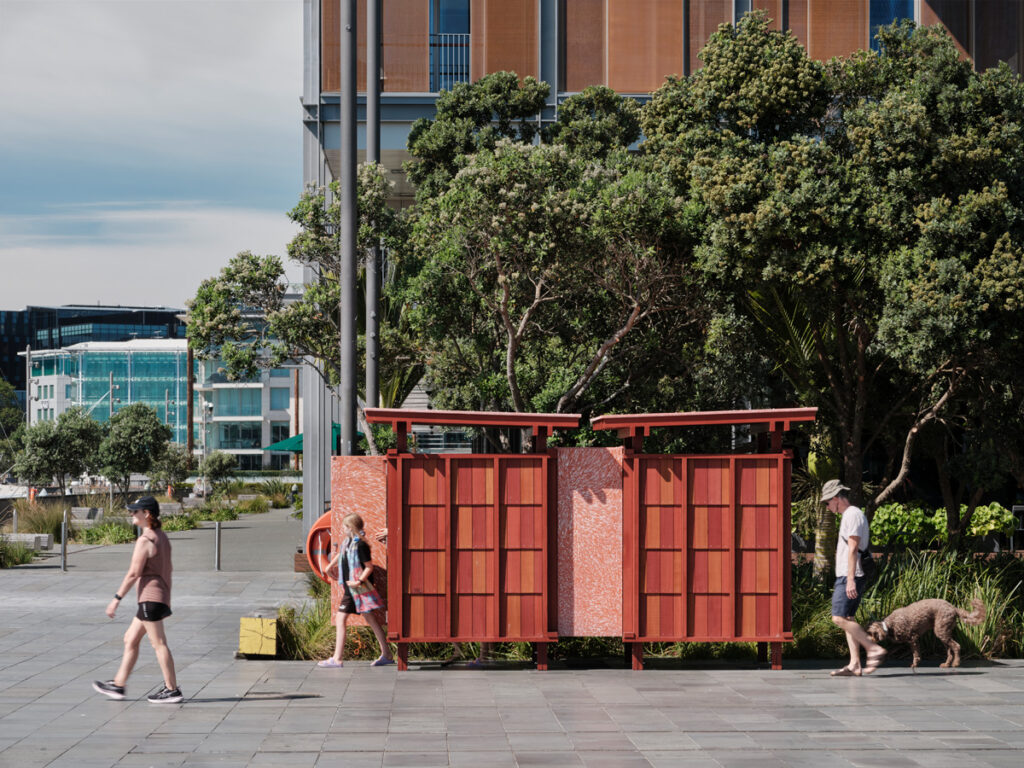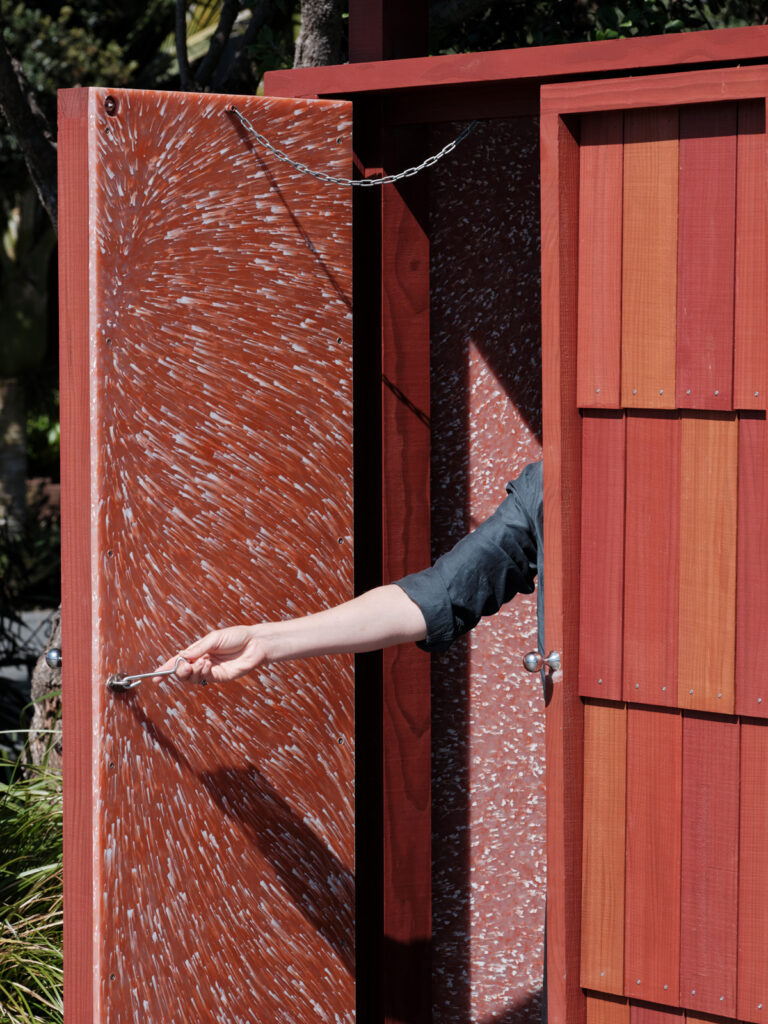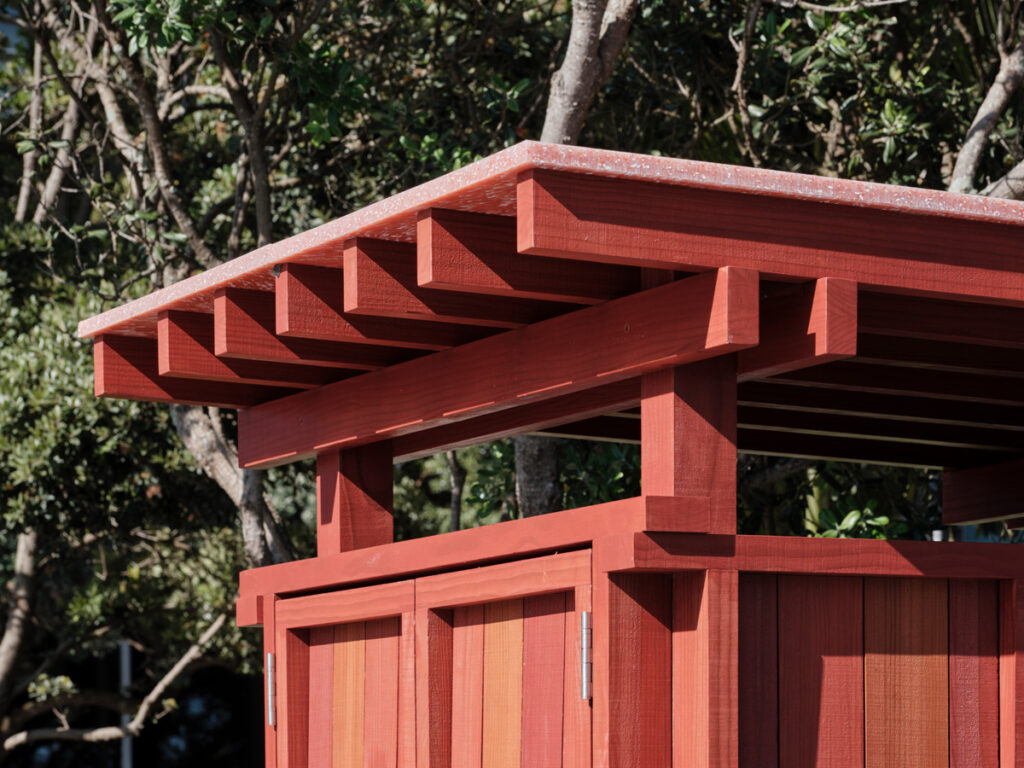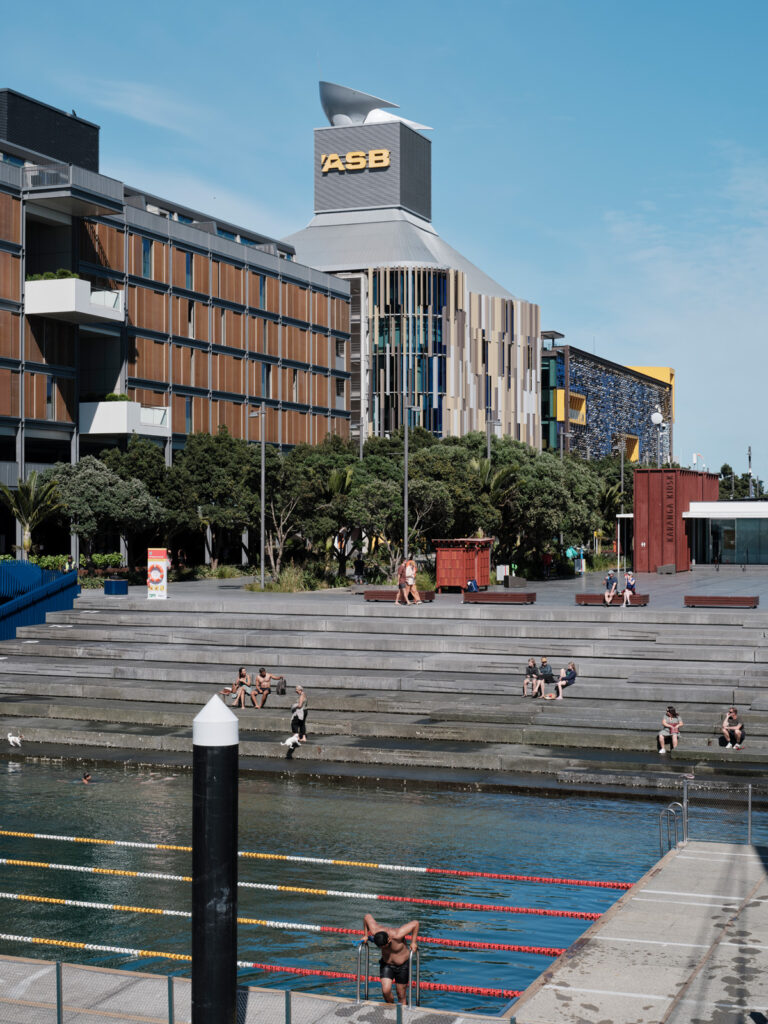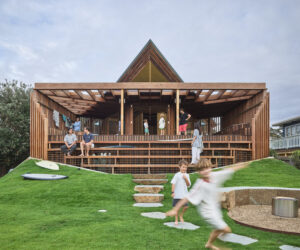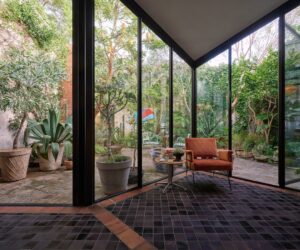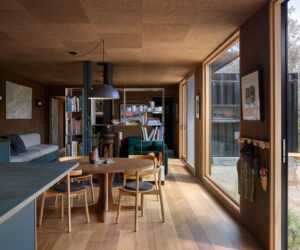Not Wasted: Flotsam Jetsam
The experience of swimming in a stunning new ocean pool begins and ends in these equally beautiful changerooms.
Auckland’s Karanga Plaza hums with movement. On warm days, swimmers dip in and out of the harbour pool while manu bombers line the edge of the jumping platform, waiting their turn. A manu is a cannonball-style dive developed by Māori and Pasifika communities (and now a beloved kiwi pastime) where jumpers launch into the air, fold into a v-shape mid-flight, and hit the water backside first. The higher the splash, the better the dive. Equal parts sport, spectacle and neo-cultural ritual, it’s an activity shaped by presence and energy, set against the expanse of Auckland’s Waitematā Harbour.
This is the backdrop for Pac Studio’s new Karanga Changing Sheds, built for the equally new harbour pool in collaboration with Auckland Council’s regeneration agency, Eke Panuku. The sheds are made from the kind of materials often seen drifting through cityside harbours – discarded fishing nets, soft plastics and waste timber – and sit along one of Auckland’s busiest promenades. It’s a stretch defined by tidal shifts, foot traffic, and a maritime past. That history subtly influenced the project’s material palette, starting with the interior walls. These are lined with Cleanstone – a 100 per cent recycled plastic panel developed by Aotearoa-based company, Critical. Made from salvaged ocean plastics and packaging waste, the surface appears lightly mottled in red and white, catching daylight as it filters through. The material is waterproof, UV-stable, can be cut and fixed using standard tools and offers the material familiarity of timber with a significantly lower carbon footprint.
The exterior is wrapped in thermally modified Vulcan shingles from Abodo Wood. Re-machined from offcuts and damaged stock, and stained in varying shades of red, the cladding echoes the industrial hues of the surrounding waterfront. Even the framing uses repurposed timber, selected for durability in a coastal setting.
Pac Studio’s design lets these materials remain visible and unpolished. The sheds sit low in the landscape but hold presence at street level, where people flow constantly between the city and the water. Defined by texture and proportion rather than signage or scale, they register as a quiet landmark – one shaped by function and rhythm more than formality.
Though fixed in one place for now, the sheds are designed for disassembly. Weighted sandbags provide stability without the need for permanent foundations allowing the structures to be relocated or reused with minimal disruption and keeping all components in circulation beyond their current life on site.
pacstudio.nz / ekepanuku.co.nz / criticaldesign.nz
